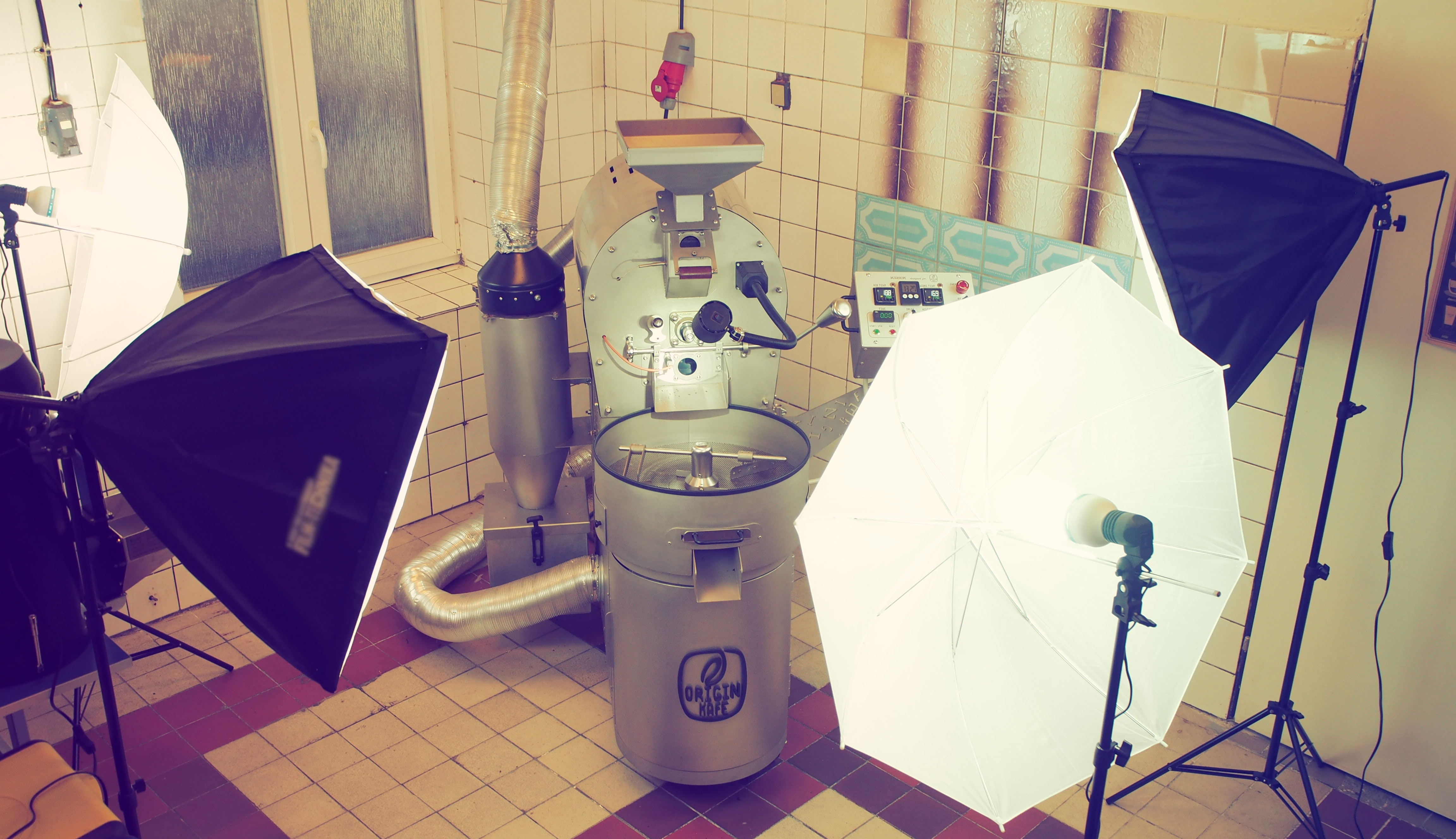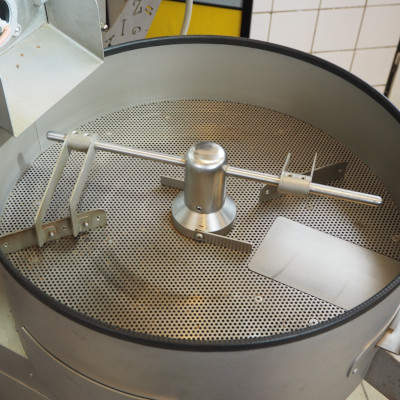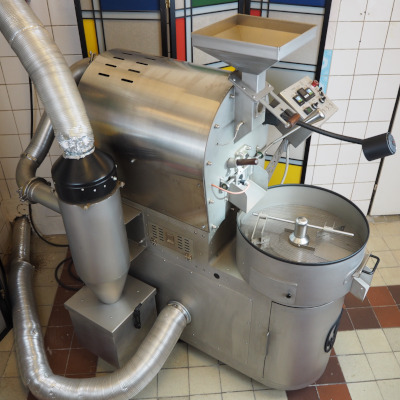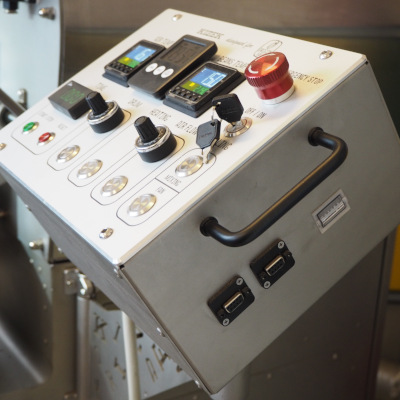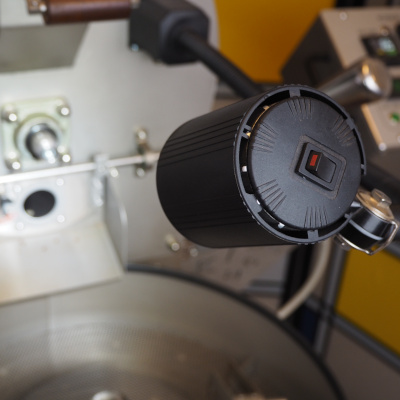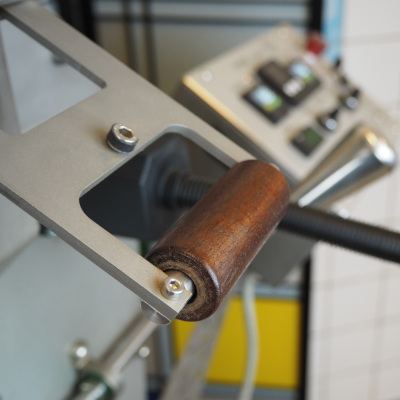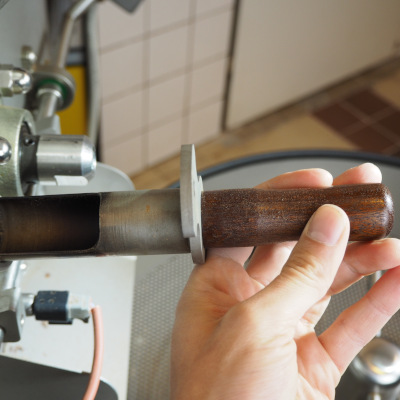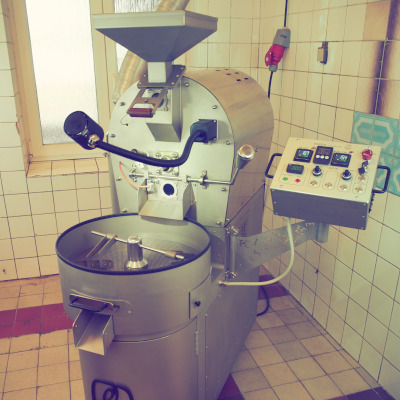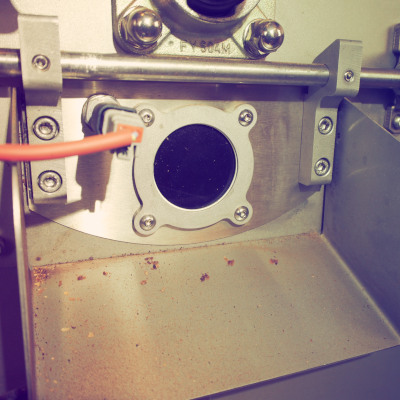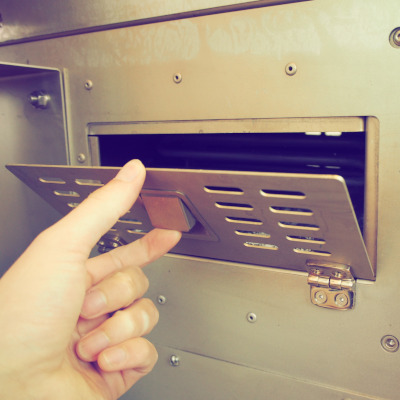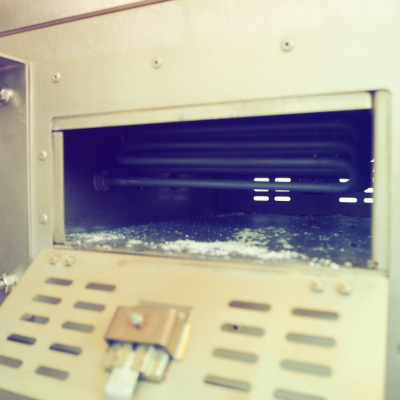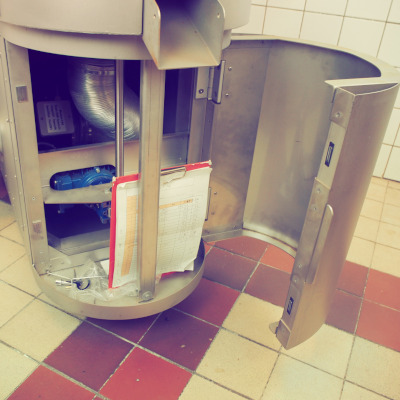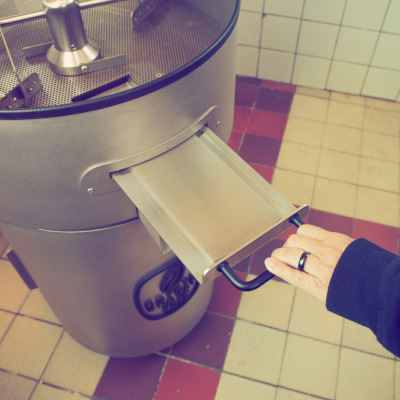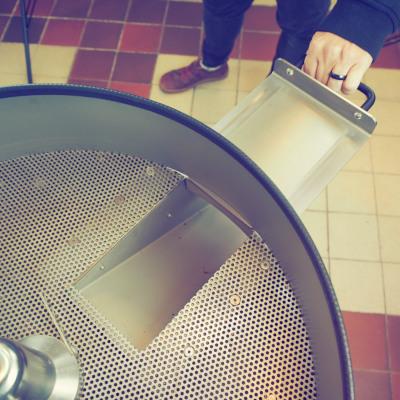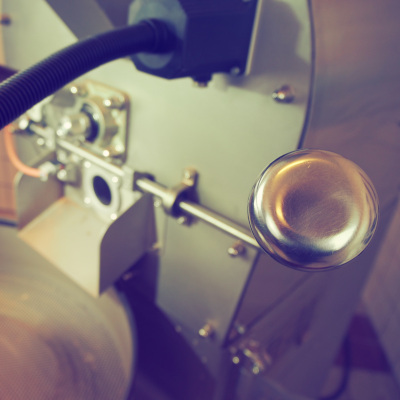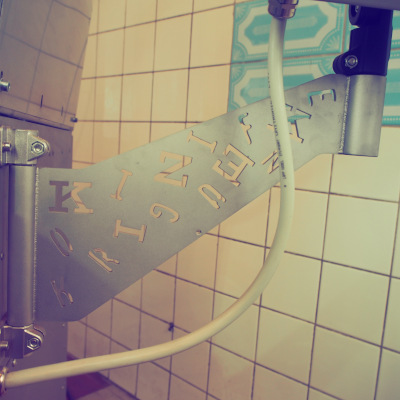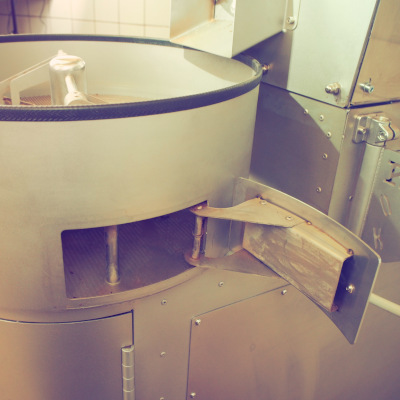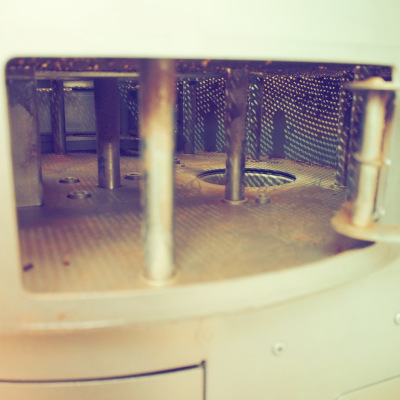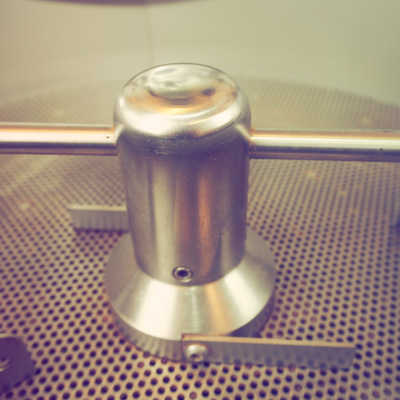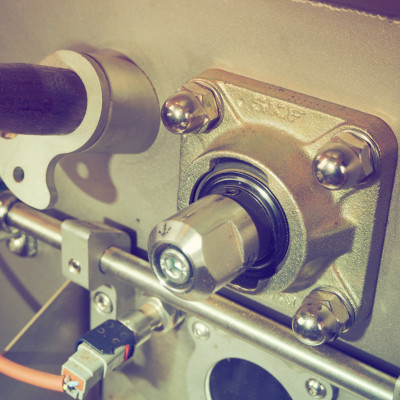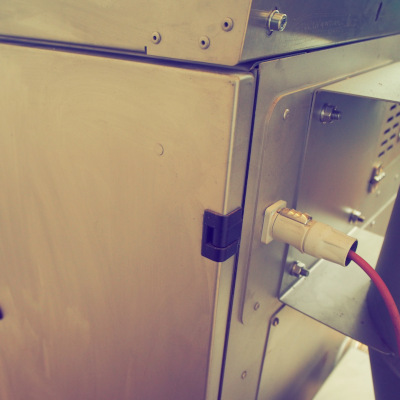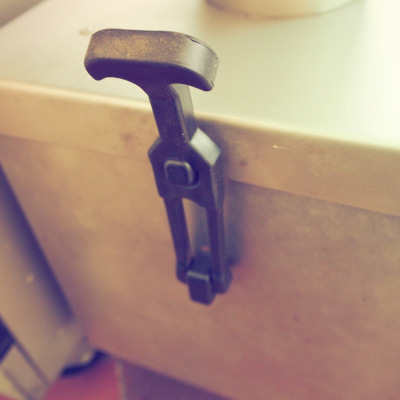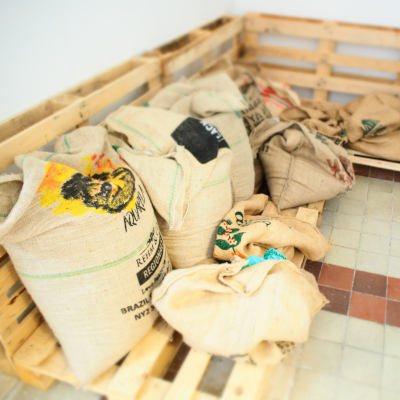Today marks two years since we delivered a Coffee Roaster to our customer. The owner of Bezvakafe.cz and an experienced barista, Mr. Ondřej Polák, asked us with a request for development and production of a Coffee Roaster machine that would meet his specific needs.
The main functions of the Coffee Roaster machine are:
- Capacity of the roaster 3 kg of green coffee for one roasting
- Electric heating, for more precise regulation
- Sufficient power to roast 3 kg of green coffee 9 kW
- Drum speed control
- Exhaust fan power control (removes chaff during roasting and exhaust gases)
- Programmable thermostat for precise roasting temperature control
- Measuring the temperature of coffee beans
- Timer for determining the roasting time
- Sufficiently large drum for rapid coffee cooling including a cooling fan
- Connection to Artisan software
- Cyclone for suction of coffee chaff (husks) during roasting and accumulation in the basket
- Very quiet operation, so that you can hear the important cracking of the coffee, the so-called "crack"
- Easy maintenance of the roaster in the coffee cooling areas and under the heating elements
- Paddle for monitoring the progress of coffee bean roasting
- Simple and intuitive control
- Sight glasses for visual inspection of the coffee during the roasting process
"Crack" is a term used in the coffee industry to describe two phases that occur during the coffee bean roasting process. These phases are called "first crack" and "second crack". Here are some points about each of these phases:
First crack (196°C):
- Sound signal: The first crack is indicated by a characteristic sound similar to tearing or cracking, which occurs when the internal moisture of the coffee beans begins to crack.
- Color change: During the first crack, the coffee beans usually start to change from green to brown as the heat causes sugars to caramelize and other chemical changes.
- Indicator of Basic Roast: Many roasters consider the first crack as the point where the beans are minimally roasted and still have a bright flavor known as "light roast." This is suitable for some coffee varieties that require a lighter roast.
Second crack (226°C):
- Sound signal: Second Crack is another phase of cracking, which may be audible but is usually less pronounced than the first crack. The sound may be similar to the first crack but less intense.
- Acidity Loss: The second crack signifies advanced roasting of coffee beans, where the acidity of the beans begins to decline, and additional flavors and aromas such as bitterness and spicy tones start to develop.
- Darker Roasting: The second crack typically occurs during darker roasts, such as "medium-dark roast" and "dark roast," which have a more intense and fuller flavor but with fewer characteristics of the original coffee beans.
We are proud to have designed and manufactured our own coffee roaster, which offers our customers the option to customize certain parts of the roaster to their preferences. This includes, for example, the choice of wooden handles, adding a personal touch to the roaster's design while ensuring comfortable and aesthetically pleasing use. The control panel is another key part that customers can define according to their preferences, allowing for easy operation and optimization of the roasting process based on individual needs. In this way, we aim to provide our customers not only with excellent performance and quality but also the opportunity for personal style and uniqueness in the world of coffee roasting.
Technical description of the coffee roaster
The Coffee Roaster is entirely made of stainless steel sheet and blasted with ballotina. The entire interior is insulated with heat-resistant ceramic wool to ensure high efficiency. Three heating elements with a total power of 9 kW roast 3 kg of green coffee in about 20 minutes.
The machine is equipped with industrial wheels with a capacity of 100 kg, making it easy to maneuver the Coffee Roaster, ensuring cleanliness around the machine. The drum in which the coffee is roasted is made of stainless steel sheet with a thickness of 2 mm. The rear wall of this drum is made of stainless perforated sheet with a hole diameter of 2 mm.
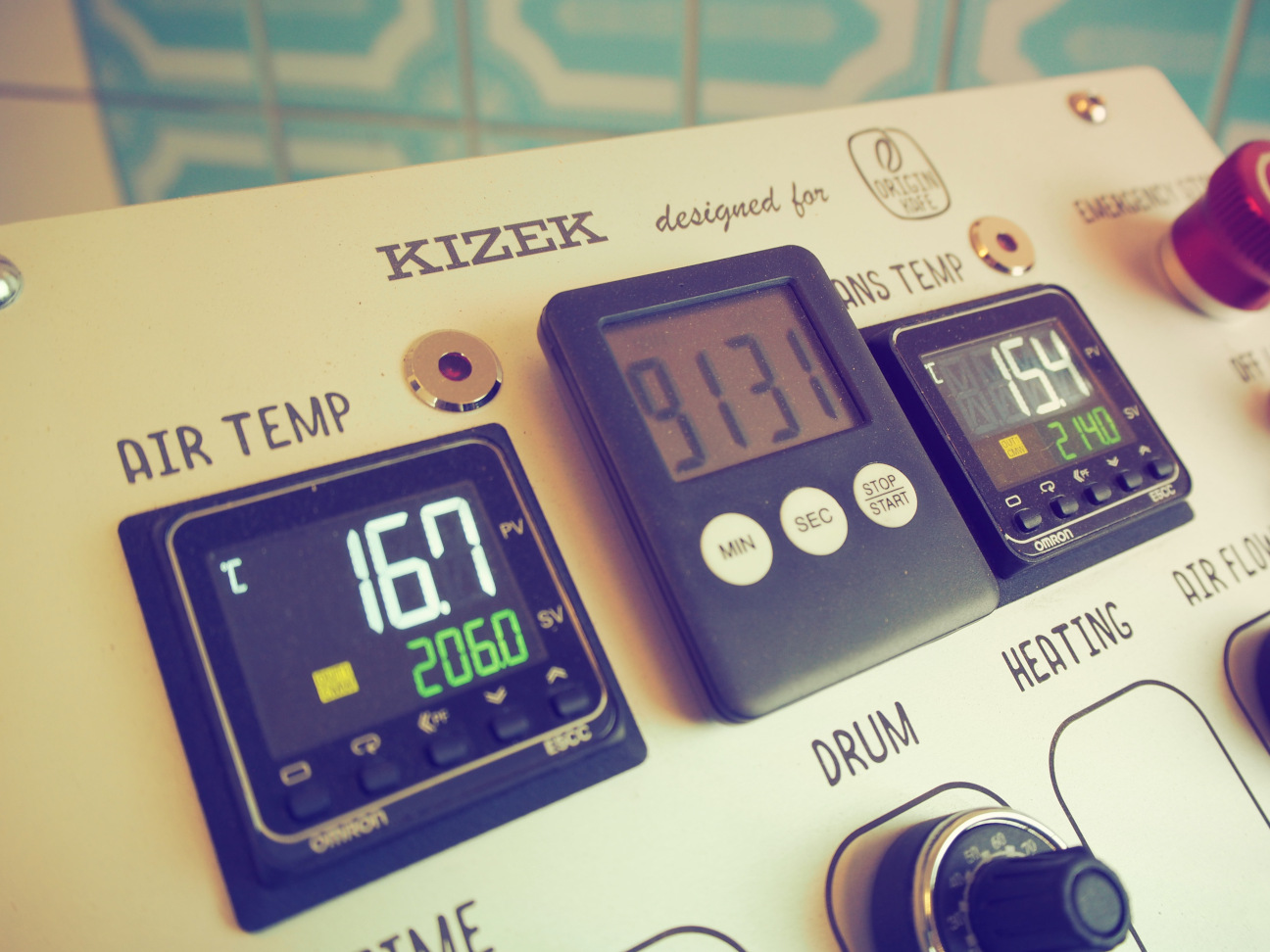
Coffee roaster maintenance
During the design of the Coffee roaster, we put a lot of emphasis on the simplicity and efficiency of cleaning to make the maintenance of the roaster as easy as possible for our customers. Every element of the roaster, from the internal components to the external surface, has been carefully designed to be easily accessible for cleaning and maintenance. We have used materials and construction that minimize the build-up of coffee grounds and facilitate the removal of dirt. This emphasis on easy cleaning not only extends the life of the roaster, but also ensures that every cup of coffee is fresh and free of impurities from previous roasts.
On both sides of the coffee roaster, there are doors for cleaning the heating elements, and there are also doors beneath the cooling drum. These are the areas that tend to accumulate the most dirt on the roaster. The primary waste during coffee roasting (known as chaff) is directed by a cyclone into a 24-liter bin.

